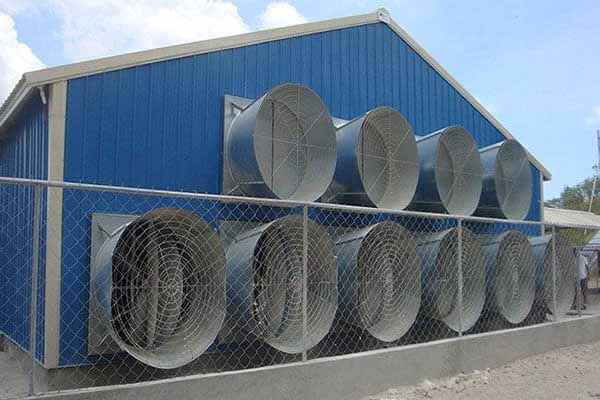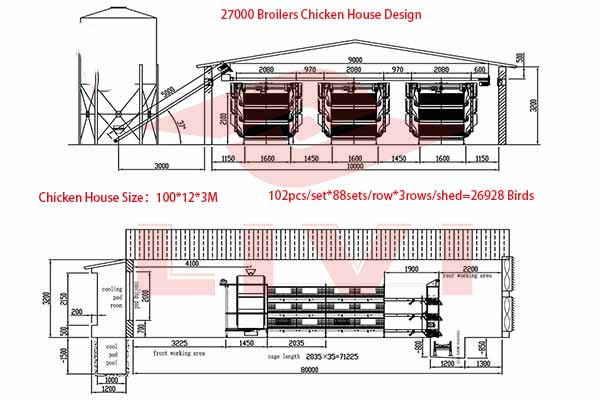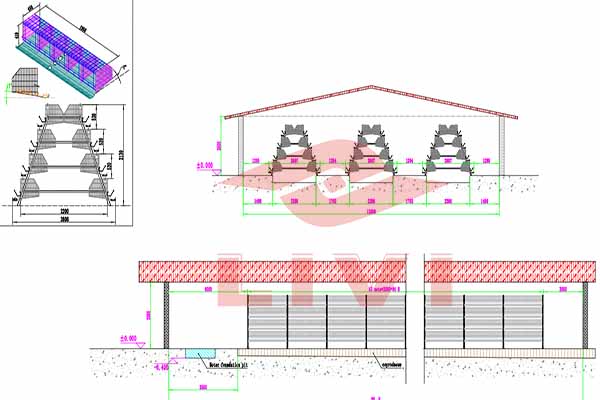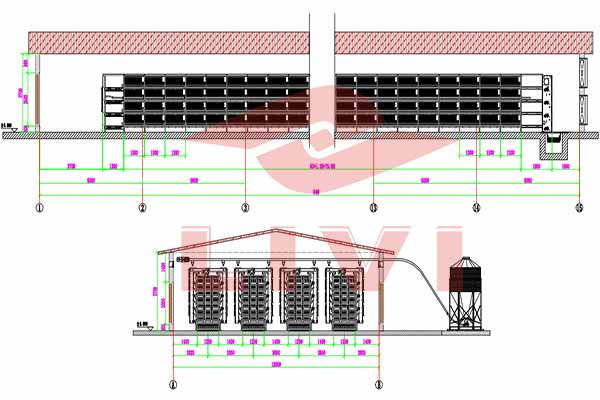Optimizing Poultry Ventilation for a 100,000 Chicken Farm in Zambia
Introduction
Raising chickens on a large scale, such as a 100,000 chicken farm in Zambia, requires efficient management and systems to ensure the health and productivity of the flock. A well-designed poultry ventilation system is crucial for maintaining optimal environmental conditions, which directly impact the chickens’ well-being and egg production. In this article, we will discuss the key aspects of designing an effective ventilation system for a large-scale chicken farm in Zambia.
Challenges in Poultry Ventilation in Zambia
Zambia experiences diverse climatic conditions throughout the year, including high temperatures and humidity. These conditions make it challenging to manage the environmental factors affecting chicken health. Poultry ventilation systems must be designed to effectively manage these challenges.
Components of a Poultry Ventilation System for 100,000 Chickens
A comprehensive poultry ventilation system typically includes the following components:
- Intake Fans: Ensure fresh air enters the farm while expelling stale air. This helps maintain the ideal CO2 and humidity levels.
- Exhaust Fans: Facilitate the exit of stale air, heat, and ammonia from the farm. This prevents the buildup of harmful gases that can lead to respiratory diseases.
- Manhole: Allow for the easy access of technicians for maintenance and repair work.
- Insulation: Minimize heat loss during cold weather and prevent heat gain in hot conditions.
- Airflow Management: Use strategically placed baffles and windbreaks to control the flow of air within the farm.
Calculating Airflow Requirements
To ensure effective ventilation, it’s important to calculate the required airflow for your 100,000 chicken farm. A general rule is to maintain an airflow of 1 to 1.5 cubic meters per bird per hour. In this case, you would need an airflow of 100,000 to 150,000 cubic meters per hour.
Monitoring and Control Systems
An automated monitoring and control system can optimize ventilation by adjusting the intake and exhaust fans based on real-time conditions within the farm. This system should track temperature, humidity, CO2 levels, and other critical parameters to ensure the ideal environment for your chickens.
Case Study
In a recent project in Zambia, a farm with 100,000 chickens was struggling with respiratory diseases. By installing an efficient poultry ventilation system with advanced monitoring and control features, the farm experienced a significant reduction in respiratory issues and a corresponding increase in egg production.
Conclusion
Designing a poultry ventilation system for a 100,000 chicken farm in Zambia requires careful planning and consideration of local climatic conditions. By implementing an efficient system that includes the right components and monitoring solutions, you can ensure the health and productivity of your chickens while minimizing operating costs.
For more information on how to optimize poultry ventilation for your farm in Zambia, feel free to contact us at LIVI Mechanical. We offer free chicken farm design schemes and equipment quotes. 




